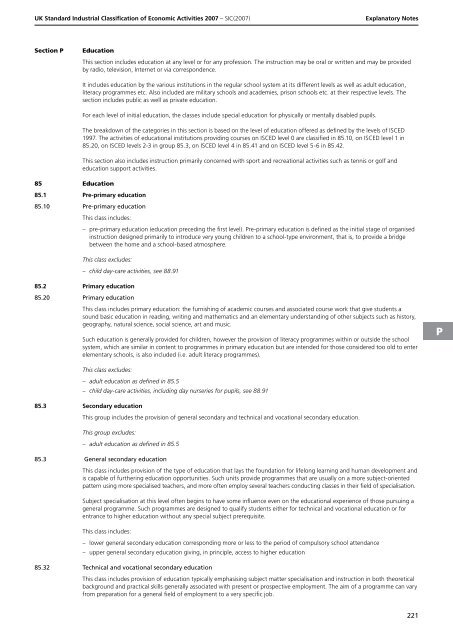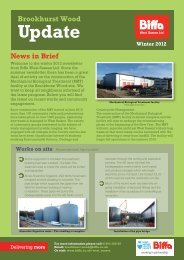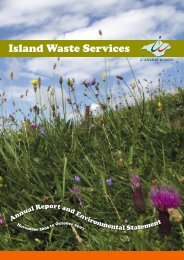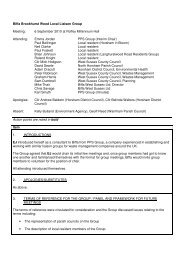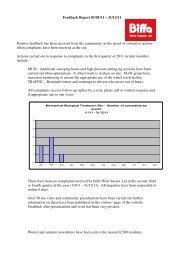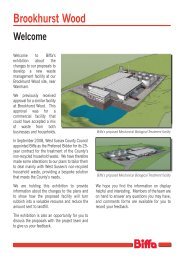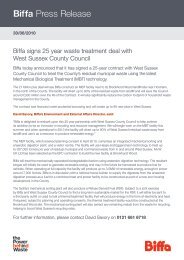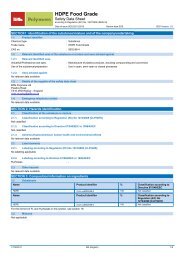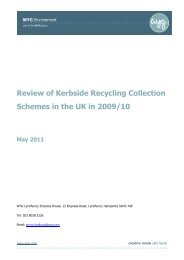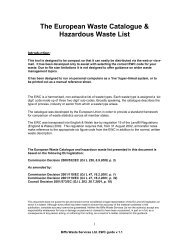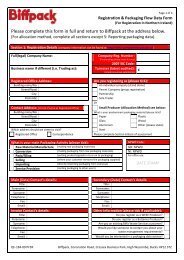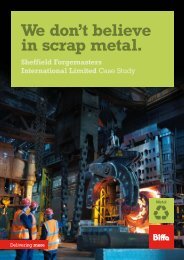detailed explanation for each SIC code - Biffa
detailed explanation for each SIC code - Biffa
detailed explanation for each SIC code - Biffa
Create successful ePaper yourself
Turn your PDF publications into a flip-book with our unique Google optimized e-Paper software.
UK Standard Industrial Classification of Economic Activities 2007 – <strong>SIC</strong>(2007)<br />
Explanatory Notes<br />
Section P<br />
Education<br />
This section includes education at any level or <strong>for</strong> any profession. The instruction may be oral or written and may be provided<br />
by radio, television, Internet or via correspondence.<br />
85 Education<br />
It includes education by the various institutions in the regular school system at its different levels as well as adult education,<br />
literacy programmes etc. Also included are military schools and academies, prison schools etc. at their respective levels. The<br />
section includes public as well as private education.<br />
For <strong>each</strong> level of initial education, the classes include special education <strong>for</strong> physically or mentally disabled pupils.<br />
The breakdown of the categories in this section is based on the level of education offered as defined by the levels of ISCED<br />
1997. The activities of educational institutions providing courses on ISCED level 0 are classified in 85.10, on ISCED level 1 in<br />
85.20, on ISCED levels 2-3 in group 85.3, on ISCED level 4 in 85.41 and on ISCED level 5-6 in 85.42.<br />
This section also includes instruction primarily concerned with sport and recreational activities such as tennis or golf and<br />
education support activities.<br />
85.1 Pre-primary education<br />
85.10 Pre-primary education<br />
This class includes:<br />
– pre-primary education (education preceding the first level). Pre-primary education is defined as the initial stage of organised<br />
instruction designed primarily to introduce very young children to a school-type environment, that is, to provide a bridge<br />
between the home and a school-based atmosphere.<br />
This class excludes:<br />
–<br />
child day-care activities, see 88.91<br />
85.2 Primary education<br />
85.20 Primary education<br />
This class includes primary education: the furnishing of academic courses and associated course work that give students a<br />
sound basic education in reading, writing and mathematics and an elementary understanding of other subjects such as history,<br />
geography, natural science, social science, art and music.<br />
Such education is generally provided <strong>for</strong> children, however the provision of literacy programmes within or outside the school<br />
system, which are similar in content to programmes in primary education but are intended <strong>for</strong> those considered too old to enter<br />
elementary schools, is also included (i.e. adult literacy programmes).<br />
P<br />
This class excludes:<br />
–<br />
–<br />
adult education as defined in 85.5<br />
child day-care activities, including day nurseries <strong>for</strong> pupils, see 88.91<br />
85.3 Secondary education<br />
This group includes the provision of general secondary and technical and vocational secondary education.<br />
This group excludes:<br />
–<br />
adult education as defined in 85.5<br />
85.3 General secondary education<br />
This class includes provision of the type of education that lays the foundation <strong>for</strong> lifelong learning and human development and<br />
is capable of furthering education opportunities. Such units provide programmes that are usually on a more subject-oriented<br />
pattern using more specialised t<strong>each</strong>ers, and more often employ several t<strong>each</strong>ers conducting classes in their field of specialisation.<br />
Subject specialisation at this level often begins to have some influence even on the educational experience of those pursuing a<br />
general programme. Such programmes are designed to qualify students either <strong>for</strong> technical and vocational education or <strong>for</strong><br />
entrance to higher education without any special subject prerequisite.<br />
This class includes:<br />
–<br />
–<br />
lower general secondary education corresponding more or less to the period of compulsory school attendance<br />
upper general secondary education giving, in principle, access to higher education<br />
85.32 Technical and vocational secondary education<br />
This class includes provision of education typically emphasising subject matter specialisation and instruction in both theoretical<br />
background and practical skills generally associated with present or prospective employment. The aim of a programme can vary<br />
from preparation <strong>for</strong> a general field of employment to a very specific job.<br />
221


